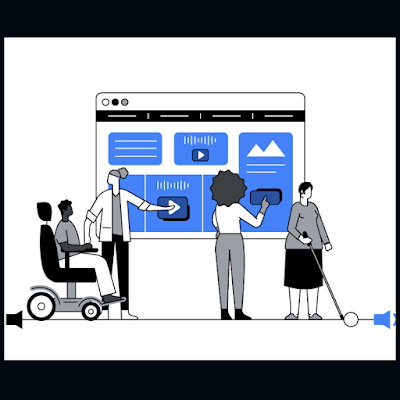Enhancing Accessibility for People with Disabilities
Accessibility is a fundamental aspect of inclusivity, ensuring that individuals of all abilities have equal access to information, services, and opportunities. In recent years, advancements in artificial intelligence (AI) have opened up new possibilities for enhancing accessibility for people with disabilities. One such advancement is ChatGPT, a state-of-the-art conversational AI model developed by OpenAI. In this article, we explore how ChatGPT is being used to develop assistive technologies for individuals with disabilities, including speech-to-text and text-to-speech applications, revolutionizing the way people with disabilities interact with technology and the world around them.
Addressing Accessibility Challenges
Barriers to Access
People with disabilities often face barriers to accessing information and communicating with others, due to limitations in traditional interfaces and communication tools. Whether visual impairments, hearing impairments, motor disabilities, or cognitive impairments, these barriers can hinder independence, social participation, and inclusion in society.
Assistive Technologies
Assistive technologies play a crucial role in addressing accessibility challenges and empowering individuals with disabilities to fully participate in everyday activities. From screen readers and speech recognition software to alternative input devices and communication aids, assistive technologies leverage technology to bridge the gap between individuals' abilities and their environment.
ChatGPT as an Assistive Tool
Speech-to-Text Applications
ChatGPT's advanced natural language understanding capabilities make it well-suited for speech-to-text applications, allowing individuals with speech impairments to convert spoken language into written text. By transcribing spoken words with high accuracy, ChatGPT enables users to communicate more effectively through text-based communication channels, such as email, messaging platforms, and social media.
Text-to-Speech Applications
Conversely, ChatGPT's text-to-speech capabilities enable individuals with visual impairments to access written content through audio output. By synthesizing written text into natural-sounding speech, ChatGPT transforms digital content into an accessible format that can be heard and understood by individuals with visual impairments, empowering them to access information independently and efficiently.
Transformative Impact
Independence and Empowerment
By leveraging ChatGPT-powered assistive technologies, individuals with disabilities gain greater independence and autonomy in accessing information, communicating with others, and engaging in everyday activities. The ability to convert speech to text and vice versa enables individuals to express themselves, participate in conversations, and access digital content with greater ease and confidence.
Inclusive Communication
ChatGPT-powered assistive technologies promote inclusive communication by breaking down barriers to interaction and fostering more inclusive environments for people with disabilities. Whether in educational settings, workplace environments, or social contexts, these technologies enable individuals to participate fully in conversations, collaborate with others, and contribute their perspectives and insights.
Future Directions
Continuous Improvement
As ChatGPT and other AI-driven assistive technologies continue to evolve, we can expect to see continuous improvements in accuracy, reliability, and usability. By incorporating user feedback, refining algorithms, and expanding language support, developers can enhance the effectiveness and accessibility of these technologies, ensuring that they meet the diverse needs of individuals with disabilities.
Integration with Existing Platforms
Integrating ChatGPT-powered assistive technologies into existing platforms and devices further enhances accessibility and usability for individuals with disabilities. Whether embedding speech-to-text functionality into communication apps or integrating text-to-speech capabilities into e-book readers and digital assistants, seamless integration enables individuals to access assistive features across a wide range of applications and devices.
In conclusion, ChatGPT is revolutionizing accessibility for people with disabilities by powering innovative assistive technologies that enable speech-to-text and text-to-speech capabilities. By leveraging ChatGPT's advanced natural language understanding and generation capabilities, these technologies empower individuals to overcome barriers to communication, access information independently, and participate fully in society. As we embrace the transformative potential of ChatGPT-powered assistive technologies, we move closer to a world where technology is truly inclusive and accessible to all.

